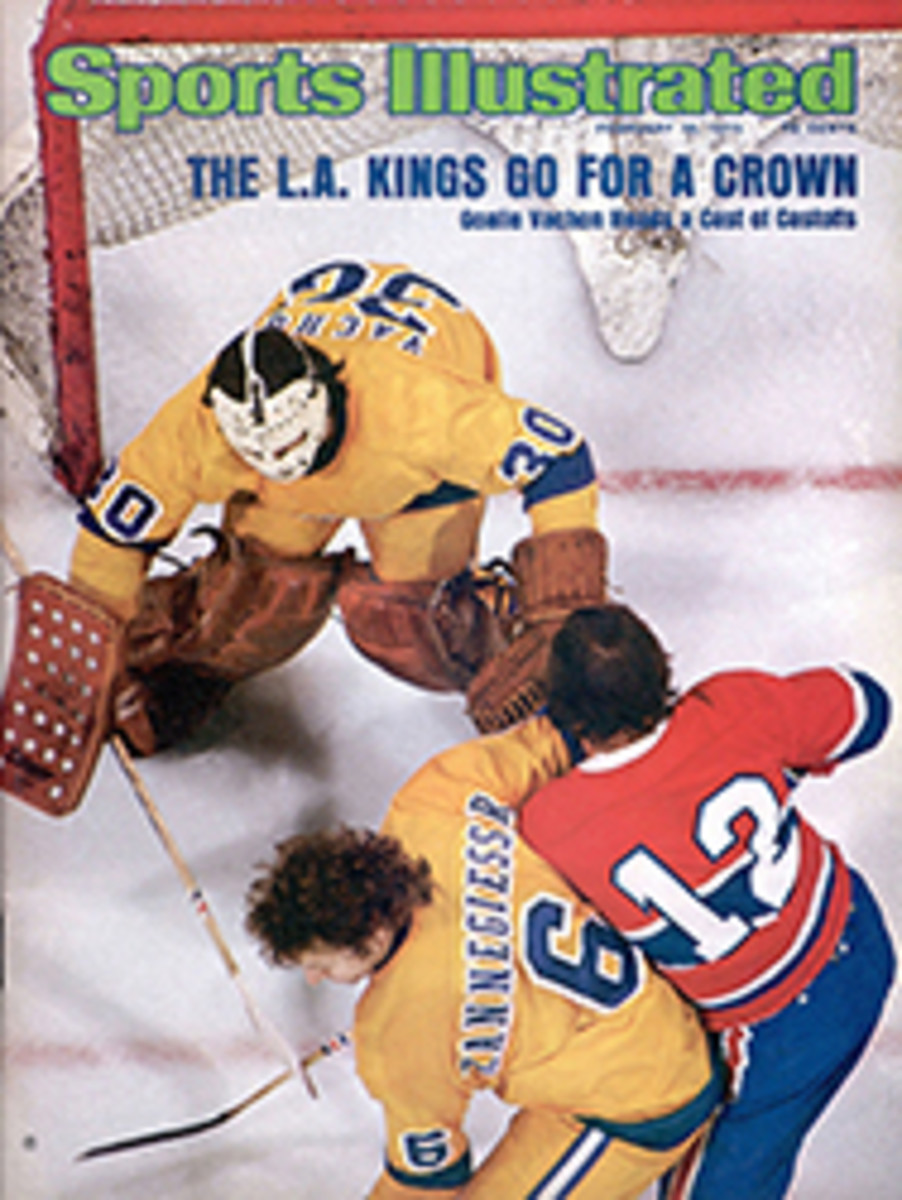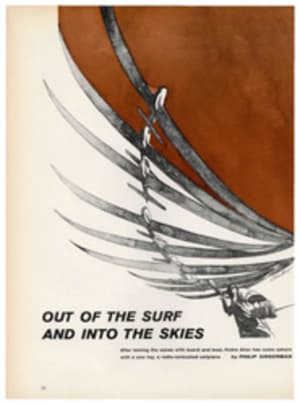
Cagey loan to San Antone
The Baseline Bums never had it better. It was one of those soft Saturday nights in historic San Antonio, warm enough for lovers to be out strolling the picturesque paths that follow the windings of the gentle river through downtown, and inside the splendid HemisFair Arena just off South Alamo Street the cups of beer were flowing smoothly to the Bums, almost as smoothly as the floor work of their beloved Spurs. For the Spurs it was their third game in as many nights, and although they had their bad moments, in the end they overcame St. Louis 115-104. Up in section 20, far from the floor, a Bum stood up and shouted to the crowd at large, "Lord, just think what we could do if we had 11 players."
Eleven men. That is how many the ABA permits on each roster. The Spurs have reached that number just once this season. Their plenitude lasted for less than 24 hours, and did not even coincide with a game. But since their arrival in San Antonio last season as a lend-lease team from Dallas, much of what the Spurs have done has defied convention. Amazingly, the club has been successful, which is to say that the Spurs are not losing as much money as most of the other teams in both pro basketball leagues. At the moment, after 25 home games, the Spurs are averaging 7,840 fans a game. That puts them fourth in the 10-team ABA, behind New York, Kentucky and Indiana, and would put them 10th in the 18-team NBA.
Says Spurs General Manager John Begzos, "If you put a gun to my head right now and asked, 'Why are you drawing 8,000 people a game?' I'd have to tell you to pull the trigger because I sure don't know."
To locate the answer it might be useful to drop back a bit, to two years ago when the franchise was up in Dallas, and dying. The Chaparrals, as the Spurs were called then, were announcing attendance figures of 2,000 a game, but the actual count was more like 500. Dallas was about to finish last in the Western Division with a 28-56 record.
"I got a call from Bob Briner, the Dallas general manager," says Red McCombs, now the Spurs' president and one of the two principal owners. "He asked me if I was interested in an ABA franchise. I told him no way."
Still, Briner made a trip to San Antonio, and became convinced that it was the perfect place to relocate. A year earlier Houston of the NBA had played 13 games in San Antonio, drawn well and had made plans to play at least as many games there the following season. Briner talked to a number of people in San Antonio—the mayor, the Chamber of Commerce and the local sports editors—looking for the right person to run a franchise. Everyone mentioned Red McCombs, who had once owned stock in a minor league baseball team in Corpus Christi. McCombs had a variety of successful business interests, including an agency that for the past 16 years had sold more Fords than any other in Texas.
"I kept saying no," says McCombs. "I had never even seen an ABA game. Finally Briner told me to see if I could come up with a deal. A deal." The big redhead laughs. "That changed my mind. Deals have always interested me."
And so McCombs put together what must be one of the most inventive contracts in sports history. He agreed, along with construction magnate John Schaefer and 33 lesser investors, to lease the Dallas franchise for three years. Lease, not buy.
"We agreed to operate their franchise in San Antonio. We would have operational control. We would absorb up to $600,000 in losses for the first two years. And we had an option to buy. To our surprise they agreed."
In came the new Spurs, with the same old cast of players. Begzos moved in as sales manager, coming over from the San Antonio Brewers where, as president and general manager, he had been named baseball's Class AA minor league executive of the year. Tom Nissalke, former coach of the Seattle SuperSonics, was named to run the team.
"Houston had played a few games here," says Begzos, "but actually these people had never seen basketball before. Except at St. Mary's University, which plays in a 1,500-seat gym, and Trinity, which doesn't grant scholarships anymore. And high school basketball, which is the best-kept secret in Texas. We came in, but we were ready to bail out. We were supposed to open Oct. 10, and on the ninth all the ABA players went out on strike. It was just great for sales."
The strike ended at 2 p.m. on the 10th. At 2:30 one of the new investors called Begzos.
"Any seats left?" he asked.
"We can seat about 10,000," Begzos replied. "And we still have 11,000 tickets to sell."
Now Begzos can look back and laugh. "But it wasn't funny then," he says. "This man told me I had to fill the place. We could have opened the doors and forced people in with a gun and still not filled it. I gave away tickets in 100-seat blocks. And at game time there we were, all freezing to death. The building people set the temperature at 60° during the day of an event. They figure the body heat will warm the place. But with the people we had, we couldn't have warmed a men's room."
About then Begzos organized his Baseline Bums, a group of beer-swilling enthusiasts who are basketball's loudest and frequently most profane cheerleaders. The Bums had actually started with the Brewers when two high school seniors, Larry Braun and David Boyle, worked out a ticket discount deal with Begzos. They patterned their group after the Bleacher Bums of Chicago's Wrigley Field. But both left San Antonio to attend college and Begzos lost track of them until the day the two wandered into his office and asked him if he could work another deal with the Brewers for them. Instead, Begzos pointed to section 20 of the arena and told them it was theirs: $4 seats at $1 a pop. The pair put an ad in the paper, asking only loud beer drinkers to reply, and the Bums were reformed. They even came up with their own Dancing Harry, Ernest Muñoz, who has become something of a local celebrity.
"Then we made a few deals, won some games and suddenly we were drawing people. We were stunned. The most surprised bunch of people in town was management," says Begzos. "Now everybody figures we're geniuses, and we don't even know what we're doing."
The deals the new Spurs owners made may have been few, but they were mighty. First they bought Swen Nater, the 6'11", 250-pound center, from Virginia for $300,000. At the time Nater had played just 17 ABA games and was best known as that second-string pivotman from UCLA. The Virginia owners were known to be in need of cash, and in New York, Mike Storen, then the ABA commissioner, mumbled something about bumbling amateurs being ripped off.
"I just fell in love with him the first time I saw him play," says McCombs. "When we paid $300,000 for him, everyone thought we were crazy."
Nater became last year's ABA Rookie of the Year, and this year he is even better. At the moment he is leading the league in rebounds, with an average of 18 a game, and he is becoming at least somewhat aggressive. Last season he blocked 63 shots in 79 games. Suddenly, in mid-December, he decided to become more physical, and at the halfway point in this season had blocked 68.
"But I'm still not going to just haul off and hit somebody," says the All-Star center. "I'm not out there to win a two-round decision. However, if somebody talks nasty about my wife or mother, I'll clobber them. That's the natural reaction."
The Spurs made their second big move of last season when they sent another $250,000 to Virginia for All-Star Forward George Gervin. This time Storen said no, mostly out of concern for the Spurs, but also because he thought the Virginia franchise had unloaded enough of its top players already (Julius Erving had previously been dispatched to New York). But the Spurs said Virginia had taken the money, and so they took Gervin. At the moment he is the seventh-best scorer in the ABA. At the end of last season the Spurs, full of optimism, exercised their option to purchase the franchise from the Dallas owners, and in the summer picked up Donnie Freeman, a former All-Star, from Indiana, to go with All-Star Guard James Silas. Add veteran Rich Jones as the other forward, and it is little wonder that Jimmy the Greek made the Spurs a 2-1 favorite to win the West this time. While still feeling their way last season, the Spurs won 45 and lost 39, and then pushed Indiana to seven games before losing in the playoffs. They had drawn 296,721 spectators, an average of 6,594 a game.
But the Greek doesn't know everything. First, there is Denver, which early put a lock on the division lead. Then Nissalke and Angelo Drossos, the Spurs' executive vice-president and trustee, got into a power struggle while trying to find the elusive 11th player. The coach lost. With a promising 17-10 record, Nissalke was fired on Friday, Dec. 13. Bob Bass, who had become general manager at Memphis after a year as director of ABA officiating, became the Spurs' coach. Under Nissalke the Spurs played a slow control game. With Bass they are running. It was a tough transition. They went on a 14-day nine-game road trip and lost seven. Since then they have won 12 of their last 18, which is good enough for second, 11 games behind the Nuggets. And the fans are still pouring in.
"The fans are something else," says Begzos. "We went on that terrible road trip and came home to play on New Year's Eve—and drew 6,195 people. On New Year's Eve! Now, if I could only get those damn Bums to stop swearing so much."
PHOTO
UP IN SECTION 20, THE SPURS' BASELINE BUMS WHOOP IT UP FOR THEIR HEROES
PHOTO
NATER GLOWS ONTO ANOTHER REBOUND

